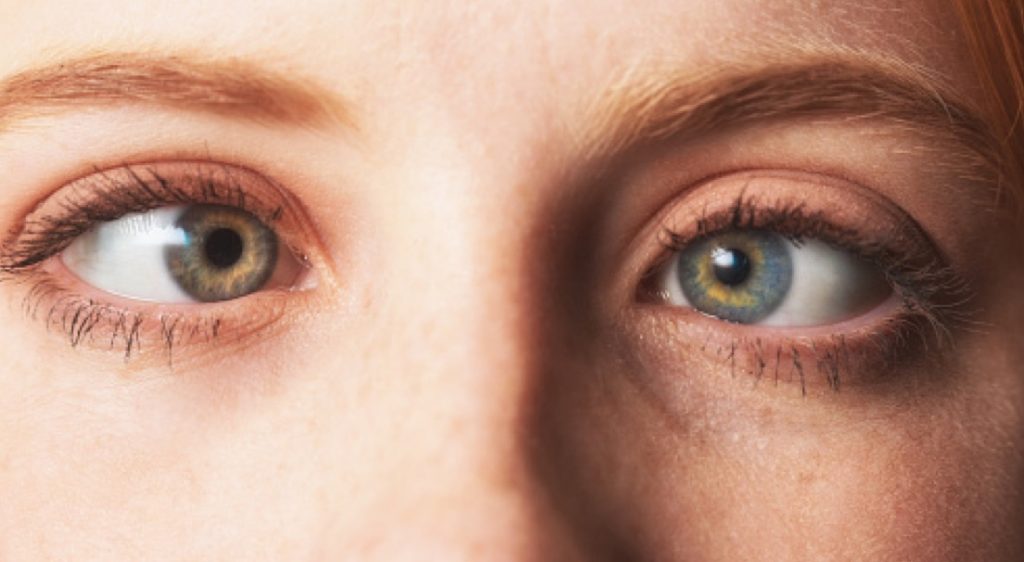According to the American Academy of Ophthalmology, crossed eyes, or strabismus, are a condition in which the eyes don’t line up properly.
It can affect anyone at any age, but is most common in young children. If left untreated, it can lead to amblyopia, or “lazy eye.”
However, there are treatments available that can help improve vision and alignment of the eyes. You can Try Medication which is available on Theyavue.com.
What Are Crossed Eyes?
Crossed eyes, also called strabismus, are a condition in which your eyes don’t line up. If you have this condition, your eyes look in different directions. And each eye will focus on a different object.
The condition is more common in children, but it can also occur later in life. In older children and adults, crossed eyes can be caused by a variety of underlying medical conditions, like cerebral palsy or stroke.
Crossed eyes can usually be corrected with corrective lenses, surgery, or a combination of both.
Signs Of Crossed Eyes
If you have crossed eyes, your eyes might point inward or outward or focus in different directions. You might also have:
- Impaired Vision
- Double Vision
- Decreased Depth Perception
- Eyestrain Or Headache
Your symptoms may be constant or appear only when you’re tired or not feeling well.
What Causes Crossed Eyes?
Crossed eyes occur either due to nerve damage or when the muscles around your eyes don’t work together because some are weaker than others.
When your brain receives a different visual message from each eye, it ignores the signals coming from your weaker eye.
If your condition isn’t corrected, you may lose vision in your weaker eye.
Crossed eyes are common in children. Often the underlying cause is unknown. Infantile Esotropia is a type of crossed eyes that appears in babies during their first year of life.
Esotropia runs in families and usually requires surgery to correct. Acquired Esotropia occurs in children usually between the ages of 2 and 5. Eyeglasses can usually correct it.
Crossed eyes can also occur later in life. It’s usually caused by physical disorders, like eye injuries, cerebral palsy, or stroke. You may also develop crossed eyes if you have a lazy eye or are farsighted.
How Is Crossed Eyes Diagnosed?
To prevent vision loss, early diagnosis and treatment for crossed eyes is important. If you develop symptoms of crossed eyes, make an appointment with an eye doctor. They’ll perform a series of tests to check the health of your eyes that may include:
- A Corneal Light Reflex Test To Check For Crossed Eyes
- A Visual Acuity Test To Determine How Well You Can Read From A Distance
- A Cover/Uncover Test To Measure Your Eye Movement And Deviation
- A Retina Exam To Examine The Backs Of Your Eyes
If you have other physical symptoms along with crossed eyes, your doctor may examine your brain and nervous system for other conditions.
For example, they may conduct tests to check for cerebral palsy or Guillain-Barré syndrome.
It’s common for newborn babies to have crossed eyes. If your baby has crossed eyes that persist beyond 3 months of age, make an appointment with their doctor.
Young children should undergo an eye exam before 3 years of age.
Who Is At Risk Of Crossed Eyes?
You’re more likely to develop crossed eyes if you:
- Have Family Members Who Have Crossed Eyes
- Have A Brain Disorder Or Brain Tumor
- Have Had A Stroke Or Brain Injury
- Have A Lazy Eye, Are Farsighted, Or Have Vision Loss
- Have A Damaged Retina
- Have Diabetes
How Are Crossed Eyes Treated?
Your recommended treatment plan for crossed eyes will depend on the severity and underlying cause of your condition.
If your crossed eyes have resulted from a lazy eye, your doctor may have you wear a patch over your stronger eye to force the muscles of your weaker eye to work harder.
Your doctor might also prescribe eye drops to blur the vision in your stronger eye. They can also use Botox injections to weaken the muscle that’s overacting and causing the eye turn.
Other potential treatments include:
- Eye Exercises
- Corrective Lenses, Such As Eyeglasses Or Contact Lenses
- Surgery On Certain Eye Muscles, Particularly If Corrective Lenses Haven’t Corrected The Condition
If your crossed eyes are caused by an underlying medical condition, such as a brain tumor or stroke, your doctor may prescribe medication, surgery, or other treatments.
What Is The Long-Term Outlook For Crossed Eyes?
Often crossed eyes can be corrected with corrective lenses, eye patches, surgery in rare cases, or by other modalities.
It’s important to seek treatment right away to lower your risk for vision loss. After you’ve received treatment, watch your eyes for changes. In some cases, the condition may come back.
If your crossed eyes are caused by an underlying medical condition, early diagnosis and treatment may help improve your chances of recovery.
Ask your doctor for more information about your specific condition and treatment options.
